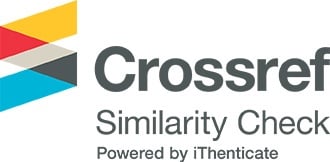Đặc điểm thực vật, mã vạch DNA và phân tích sơ bộ thành phần hóa học của cây Trà gân-Camellia euphlebia, Theaceae
Các tác giả
DOI: https://doi.org/10.59294/HIUJS.26.2023.528Từ khóa:
Camellia euphlebia Merr. ex Sealy, gen matK, hình thái, giải phẫu, thành phần hóa họcTóm tắt
Đặt vấn đề: Cây Trà gân là loài đặc hữu có ở miền Bắc Việt Nam và Tây Nam Trung Quốc. Chiết xuất từ lá có tác dụng chống ung thư, chống oxy hóa, hạ đường huyết. Nhóm tác giả muốn bổ sung một vài thông tin để nhận diện loài này. Mục tiêu nghiên cứu: Khảo sát đặc điểm thực vật, mã vạch DNA để góp phần định danh đúng loài Trà gân và sơ bộ thành phần hóa học. Đối tượng và phương pháp nghiên cứu: Cây Trà gân tươi được thu thập tại Hoành Bồ - Quảng Ninh, đánh giá hình thái bằng cách quan sát và đo các đặc điểm của mẫu thân, lá và hoa tươi của chúng; đối với các nghiên cứu giải phẫu, các vi phẫu thu được bằng dao lam, các mẫu được nhuộm với carmin và vert'iod, các hình vi học được chụp bằng máy ảnh Samsung qua thị kính của kính hiển vi, kèm phân tích trình tự gen matK và khảo sát sơ bộ thành phần hóa học bột lá bằng phương pháp Ciuley có cải tiến. Kết quả: Loài Trà gân được định danh dựa trên hình thái và trình tự gen matK xác định tên khoa học là Camellia euphlebia Merr. ex Sealy có đặc điểm hình thái đặc trưng: Lá đơn, mọc cách, nhiều lá đài, cánh hoa và nhị, 3 lá noãn, bầu trên; kèm dữ liệu giải phẫu: Gỗ-libe hình cung ở vi phẫu lá, 1 lớp mô giậu, thể cứng hiện diện trong giải phẫu thân và lá, bột dược liệu (đặc trưng là thể cứng) và sơ bộ thành phần hóa học bao gồm: Tinh dầu, chất béo, sterol, flavonoid, saponin, tannin và alkaloid. Kết luận: Nghiên cứu góp phần cung cấp thêm dữ liệu về mã vạch DNA, đặc điểm hình thái, giải phẫu thân, lá và thành phần hóa học có trong lá của loài Trà gân ở Việt Nam.
Abstract
Background: “Tra gan” is a endemic species in the Northern of Vietnam and the Southwestern of China. Leaf extracts have anticancer, antioxidant, hypoglycemic effect. The authors aim to add further information to accurately identify this species. Objectives: The aim of this study is to investigate the botanical characteristics, DNA barcodes for identification of “Tra gan” and preliminary phytochemical screening. Materials and Method: Fresh trees collected in Hoanh Bo-Quang Ninh; morphological assessment was by observation of features of their fresh stem, leaf and flower specimens; for the anatomical studies, cross sections obtained using a razor, the sections were stained with carmine and verd'iode, microphotographs were obtained using a Samsung digital camera focused through the microscope eyepiece, analyzed gene matK sequence and preliminary phytochemical screening was conducted by the modified Ciuley method. Results: “Tra gan” was identified as Camellia euphlebia Merr. ex Sealy, based on morphological characteristics and gene matK sequence with the following featured morphological characteristics: Simple leaf, alternate, numerous sepal, petal and stamen, 3 carpels, hypogynous and data of anatomy: Xylem-phloem form are shaped on leaves anatomy, palisade mesophyll 1 layer, sclereid present in stems, leaves anatomy; leaves' herbal powder (characteristic is sclereid) and phytochemical constituents include: Essential oils, fats, sterols, flavonoids, saponins, tannins and alkaloids. Conclusion: The study contributed to providing more data about of morphological characteristics, together with the anatomical characteristics of stems, leaves and the chemical composition of the leaves of “Tra gan” in Vietnam.
Tài liệu tham khảo
[1] Dongye He YX, “Toxicological Evaluation of Camellia euphlebia Leaves Aqueous Extract Using Acute and Subacute Toxicity Studies in Mice and Genotoxicity Studies”, Evidence-Based Complementary and Alternative Medicine, 2022, 1-10, 2022. DOI:10.1155/2022/7889199
DOI: https://doi.org/10.1155/2022/7889199[2] Lin JN, Lin HY, Yang NS, et al, “Chemical constituents and anticancer activity of yellow camellias against MDAMB-231 human breast cancer cells”, Journal of Agricultural and Food Chemistry, 61, 40, 9638-9644, 2013. DOI: 10.1021/jf4029877
DOI: https://doi.org/10.1021/jf4029877[3] Dongye. He XL, X. Sai, L. Wang, S. Li, and Y. Xu, “Camellia nitidissima C. W. Chi: a review of botany, chemistry, and pharmacology”, Phytochemistry Reviews, 17, 2, 327-349, 2018. DOI: 10.1007/s11101-017-9537-x
DOI: https://doi.org/10.1007/s11101-017-9537-x[4] Dongye He XW, Ping Zhang, et al, “Evaluation of the Anxiolytic and Antidepressant Activities of the Aqueous Extract from Camellia euphlebia Merr. ex Sealy in Mice”, Evidence-Based Complementary and Alternative Medicine, 72, 4, 372-379, 2015. DOI: 10.1155/2015/618409
[5] Su L, Mo JG, Wei YL, Chen QH, et al, “Chemical constituents of saponins from leaves of Camellia euphlebia”, Chinese Traditional and Herbal Drugs, 43, 5, 877-879, 2012. DOI: 10.1016/S1674-6384(16)60012-6
[6] Yu Jing JHX, Shi Liang ZHOU, “New universal matK primers for DNA barcoding angiosperms”, Journal of Systematics and Evolution, 49, 3,176-181, 2011. DOI:10.1111/j.1759-6831.2011.00134.x
DOI: https://doi.org/10.1111/j.1759-6831.2011.00134.x[7] Phạm Hoàng Hộ, Cây cỏ Việt Nam, Thành phố Hồ Chí Minh, Nhà xuất bản Trẻ, 2000.
[8] Flora of China, “Camellia euphlebia”, 2023, [Trực tuyến]. Địa chỉ: http://www.efloras.org/ flora taxon.aspx?flora_id=2&taxon_id=242309951
Tải xuống
Tải xuống: 368











